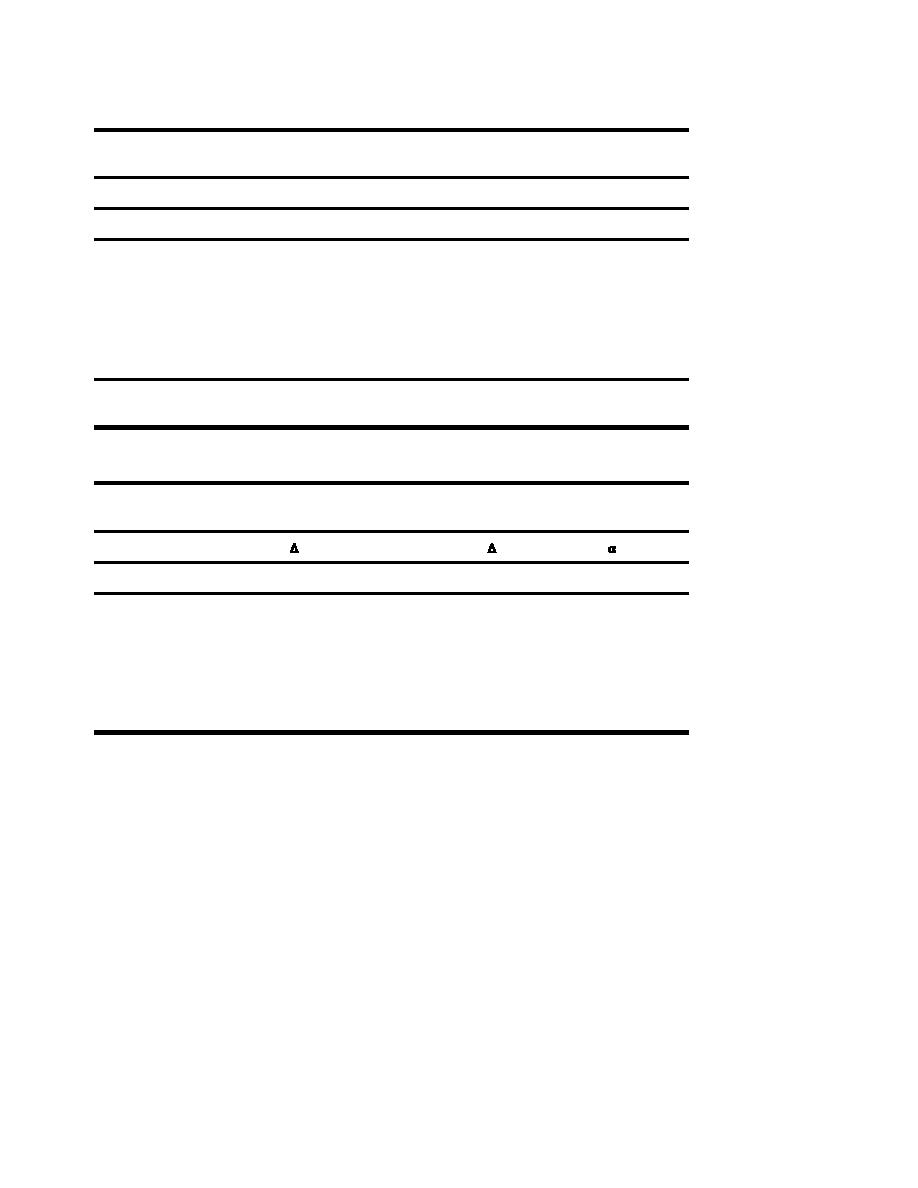
EI 02C097
01 Jul 97
Table 5-3
Values of Loading Employed in Analyses
Case
Loads, kips
moment, ft-kips
Comment
Pv
Ph
1
46
21
40
service load
2
69
31.5
60
1.5 times service load
3
92
42
80
2 times service load
4
115
52.5
100
2.5 times service load
Note: Pv /Ph = 2.19
Table 5-4
Computed Movements of Origin of Global Coordinate System
Case
Vertical movement v
Horizontal movement h
Rotation
in.
in.
rad
1
0.004
0.08
9 10-5
2
0.005
0.12
1.4 10-4
3
0.008
0.16
1.6 10-4
4
0.012
0.203
8.4 10-5
Thus, the retaining wall is in equilibrium. A further check
been employed to take into account the effect of a single
can be made to see that the conditions of compatibility are
pile on others in the group. Solutions have been developed
Figure 5-8, an axial load of 97.2 kips results in an axial
(Poulos 1971; Banerjee and Davies 1979) that assume a
deflection of about 0.054 inch, a value in reasonable
linear response of the pile-soil system. While such
satisfied. One check can be made at once. Referring to
methods are instructive, there is ample evidence to show
agreement with the value in Table 5-5. Further checks on
that soils cannot generally be characterized as linear,
compatibility can be made by using the pile-head loadings
homogeneous, elastic materials. Bogard and Matlock
(1983) present a method in which the p-y curve for a
and Computer Program COM622 to see if the computed
deflections under lateral load are consistent with the values
single pile is modified to take into account the group effect.
tabulated in Table 5-5. No firm conclusions can be made
Excellent agreement was obtained between their computed
concerning the adequacy of the particular design without
results and results from field experiments (Matlock et al.
further study. If the assumptions made in performing the
1980). Two approaches to the analysis of a group of
analyses are appropriate, the results of the analyses show
closely spaced piles nder lateral load are given in the
the foundation to be capable of supporting the load. As a
following paragraphs. One method is closely akin to the
matter of fact, the piles could probably support a wall of
use of efficiency formulas, and the other method is based
greater height.
on the assumption that the soil within the pile group moves
laterally the same amount as do the piles.
5-16



 Previous Page
Previous Page
